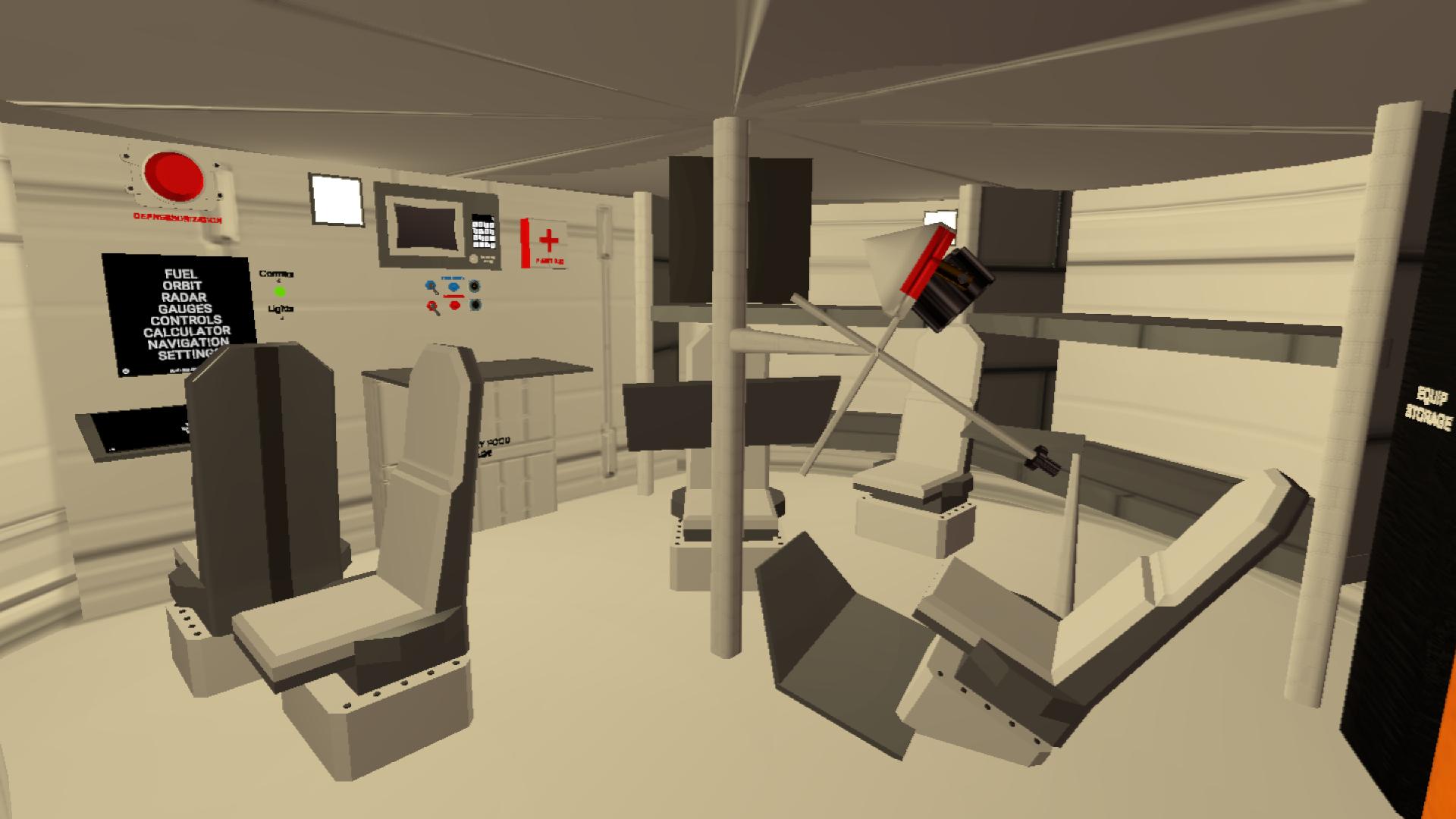One of the first IST pioneer bases in the exploration of the juno system.
Thanks to the practices of sending loads and bases to the moon, the shipment of the Cordelia probe, as well as the recent but much improved nuclear program, it was possible to develop, calculate and send this small base without the use of chemical fuel in transfer stage.
From the beginning there was faith in the efficiency and speed of nuclear engines, thanks to the development of the last nuclear shuttle it was possible to obtain a reusable program.
The nuclear stage carried by this small module can be reused (it has 34% to 39% to spare) depending on the precision of the maneuvers and previous calculations.
It has a heat shield but is not covered by fairing, this was a decisive reason to save weight, since in this type of design each kilogram is fuel time to interplanetary transfer.
The lander's main engine should not be used, it is coupled with solid boosters at specifically predetermined stages in order to maximize the lander's fuel time, which are not exceed two minutes.
Once in cylero, a parking orbit of no more than 60.2 kilometers is recommended, because if it is higher by even 0.3 kilometers, it will crash and shipping will be a waste of time.
Once in the precise orbit, the lander must be undocked directly from the nuclear shuttle docking port, it was designed this way so that it can be reused later, activate the interstage, and mark the desired landing point.
Both command chips repeat the stages so there is not too much of a problem when switching to the lander, although care must be taken not to confuse the orientation controls as the auto pilot of the lander is reconfigured by default.
Once the descent phase has begun, only the extra solid motors should be activated to brake, more or less 10 kilometers from the surface of the lowest point of the orbit, they can be used the lander's engines to make micro-adjustments to the landing point.
Once the 12 kilometers of the descent have been reached, the lander's engines must be turned on at maximum power, the speed may be high but the following stages help to achieve a soft contact.
After 10 kilometers, the stages that get rid of the aeroshell, activate the auxiliary solid motors and prepare the parachutes must be activated.
After this, wait for the solid motors to turn off, wait for the parachutes to activate and slowly regulate the lander's propulsion to touch the surface.
The remaining fuel should be around 6% to 3%.
Features interiors like crew bunks, a medical bay, control seat, experiment room, and an airlock, all in one module.
It was designed to be as light, small and practical as possible, apart from being of great help in determining the calculations of future loads and the future shipment of Drood's to the surface of Cylero, with the guarantee of being able to return in a short time. This thanks to the growing nuclear program that is being perfected little at time.
In some photographs you can see the added solid boosters.
No ladder was added for weight reasons, yet the Droonauts' EVA position is set to be directly on the surface.
Liquid hydrogen was used as it is much lighter and delivers the same efficiency as pure water.
An Important Warning
The motors are configured for warp ignition, DIRECTLY NOT RECOMMENDED TO USE THEM IN WARP.
This is because warp firing works fine but only with one engine, in this mod it's four, so it's not recommended at all, the reasons are quite strong. One of them was not wasting the launch window between Droo and Cylero.
The base is not designed for five people, only for four.
GENERAL INFO
- Created On: Android
- Game Version: 0.9.918.1
- Price: $203,636k
- Number of Parts: 741
- Dimensions: 140 m x 18 m x 18 m
PERFORMANCE
- Total Delta V: 6.0km/s
- Total Thrust: 49.8MN
- Engines: 32
- Wet Mass: 3.35E+6kg
- Dry Mass: 3.25E+5kg
STAGES
| Stage | Engines | Delta V | Thrust | Burn | Mass |
|---|---|---|---|---|---|
| 1 | 8 | 5.4km/s | 46.6MN | 3.1m | 3.35E+6kg |
| 2 | 0 | 0m/s | 0N | 0s | 1.99E+6kg |
| 3 | 4 | 636m/s | 1.0MN | 20.1m | 1.99E+6kg |
| 6 | 0 | 0m/s | 0N | 0s | 1.93E+6kg |
| 7 | 0 | 0m/s | 0N | 0s | 1.93E+6kg |
| 8 | 0 | 0m/s | 0N | 0s | 1.93E+6kg |
5 Comments
- Log in to leave a comment
-
7,695 ISTINC0RP0RATED+1 2.7 years ago
@BeastHunter
There is a specific launch window between Droo and Cylero, it really is easy to go cylero in any position as long as the window is respected, but there is only one specific point that allows you to arrive in an equatorial orbit and with a relatively low speed, for this window you must wait up to one or two years, depending on the relative position of both planets. Let's say, the trick is to wait for Droo to be "behind" Cylero but for the other side of Cylero's orbit it is the closest to Juno, if you get to that position that's your ideal window, it works even with chemical fuel, but you still need large quantities.
I literally going to Make a text diagram.
® ←Cylero
. . . . . . . . © ←Droo (position regarding being "behind" Cylero)
-
O ←Juno
-vulco orbit
-sergeaa orbit
-droo orbit
-←Closest point to Juno from Cylero's orbit.Just play around with warp mode a bit and you will see that in about 6 months to a year this window will appear.
It's a bit time consuming, but it's one of the most fuel efficient for any rocket. -
-
-










@ISTINC0RP0RATED Thanks.